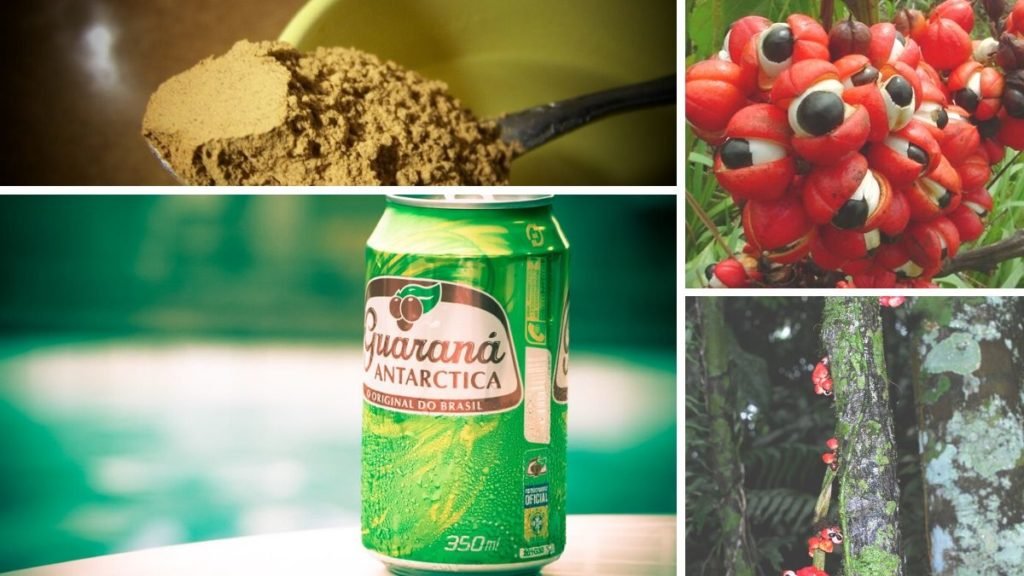
The cultivation of guarana in Brazil is very important in the northern region of the country, which supplies this raw material to a gigantic soft drink industry, which exceeds, in production volume, any other soft drink consumed in Brazil on a national scale. .
Buy guarana products online!
Scientific name
The scientific name of the guarana plant is Paullinia cupana.
It belongs to the genus Paullinia, widely distributed in the neotropical region, except for one taxon that occurs in Africa. In Brazil, 97 species of Paullinia have been recorded, of which there are 72 in the Amazon, the majority, 47 species, located in the state of Acre (Medeiros de Oliveira, 2012).

Yarina Lodge, Ecuadorian Amazon Source: Geoff Gallice from Gainesville, FL, USA [ CC BY ]
Common names of guarana
The plant has many common names, in addition to guaraná, a name that comes from the Tupí-Guaraní Wara’ná, which means “the fruit that is like people’s eyes.”
And indeed, the fruit resembles the human eye. It is also called guaraná de Maués (because of its traditional place of cultivation in Brazil), brazilian cocoa, or guaranazeiro.

Description of the guarana plant
Guarana is a semi-erect, climbing shrub, a liana or woody vine, belonging to the Sapindaceae family, native to the Amazon basin , and is widely distributed within the basin, in Brazil, Peru , Ecuador , Bolivia , Colombia , Venezuela , and abroad, in countries like Paraguay and Argentina.
Guarana grows in tropical climates, in sandy and moist soils. Its stem, brownish-yellow in color, has the shape of a long, woody, flexible vine, which can reach up to 10 m in height, and its crown varies between 9 and 12 m2.
The leaves of the plant are intense green, with prominent ribs, large, persistent, opposite, alternate to the stem, formed from 5 to 9 follicles, lanceolate and with jagged edges.
It is a monoecious plant, with male and female white flowers.

The fruit is spherical, capsular, blackish in color and shiny in appearance.
It is a dehiscent capsule, with 1 to 3 valves or divisions.
Inside each valve is a white pulp, and a single seed that turns red or orange when ripe.
The first fruit is harvested about three years after planting, and the plant gives a good productivity from the quarter to fifth, depending on the variety planted.
The most used part of the plant is the seed.
After harvesting the fruit, the seed is cleaned and roasted to separate it from the pericarp. It is then grated and pulverized in a fine-mesh hammer mill to form a powder that has numerous curative uses in indigenous medicine.
The presence of caffeine
Guarana is considered the plant with the highest caffeine content in the world.
Some researchers attribute 7% to it, others from 6.2 to 8% (Kuskoski, Roseane, García, Troncoso, 2005), but there are also other studies that report a caffeine content of a little more than 3%, although higher than that contained in coffee, which ranges from 1 to 2% (Fioravanti, 2013). Sánchez and others (2015) point out that each gram of guarana contains 36.8 mg of caffeine, 2.2 mg of theobromine and 1.1 mg of theophylline.
According to them, up to 8% of the total content of guarana extract in an energy drink can be caffeine. Apart from other components such as glucose, in high concentrations, vitamins, minerals and other components not explicitly determined on the product label.
Caffeine is a central nervous system stimulant substance. It is a plant alkaloid present in several products: coffee, cocoa, yerba mate, tea and mainly guarana. According to some investigations, it causes the release of adrenaline, prolonging the state of wakefulness and increasing the capacity for physical exertion.
This property of guarana powder was mentioned early by the Jesuit missionary Joao Felipe Betendorf in the 17th century, after visiting Amazonian indigenous communities , observing the physical resistance of the indigenous people to hunger and fatigue.
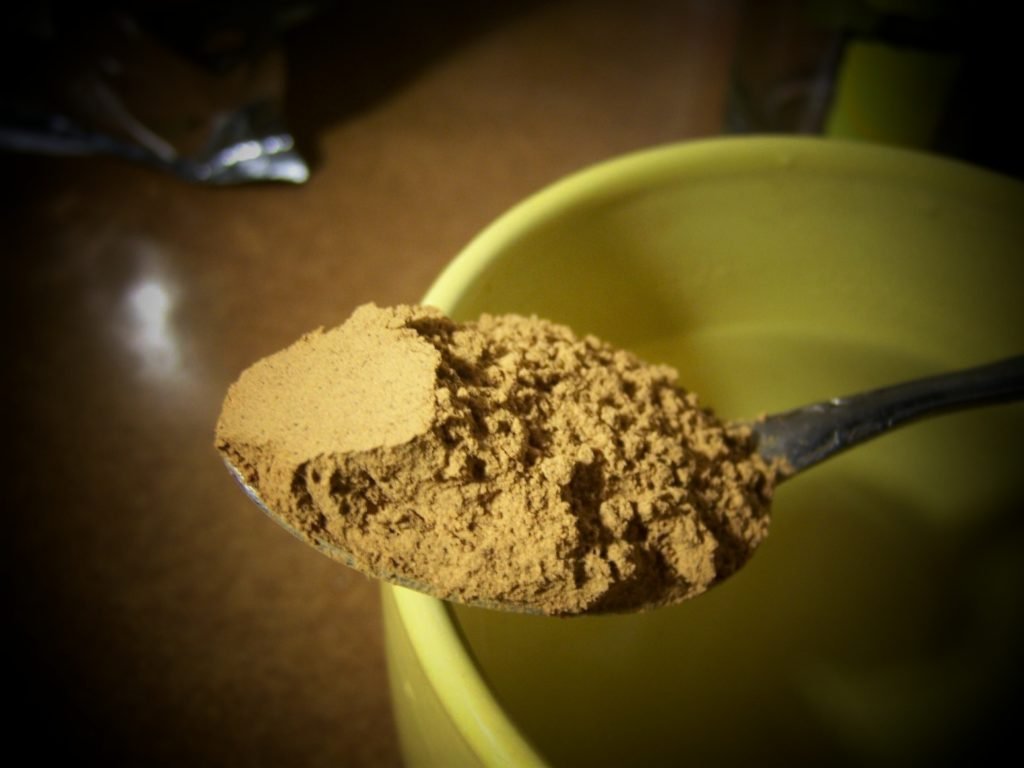
The investigations are not definitively conclusive about the beneficial effects produced by the consumption of products that contain caffeine (Molleapaza-Quispe, 2018).
In some studies, ingestion of caffeinated preparations has been found to increase perceived alertness/wakefulness, mood, and well-being.
Ingested at low doses (40 to 60 mg) it improves general performance, but in amounts greater than 200 mg it produces insomnia.
Although the amount of caffeine consumption in a safe range has not been precisely determined, it is estimated that it may be close to 400 mg per day (Manrique, Arroyabe-Hoyos, Galvis-Pareja, 2018).
Advantages and disadvantages
The consumption of the main components of energy drinks (caffeine, taurine, glucuronolactose, L-carnitine) have their advantages and disadvantages.
Caffeine is beneficial because it increases the level of alertness and locomotion, but it produces certain adverse effects such as tachycardia, increased blood pressure, irritability, and difficulty concentrating.
Taurine has beneficial effects as a neuroprotector and as an element that reduces the production of lactic acid after physical exercise, and an adverse effect for producing tachycardia .
Glucuronolactose, a carbohydrate, is beneficial for reducing oxidative stress, without any known adverse effect so far.
L-carnitine, an amino acid, improves muscle function and increases endurance in physical exercise, with the problem of increasing the risk of endometriosis.
The mixture with alcohol
What has also been studied are the problems caused in people by the associated consumption of energy drinks and alcohol, due to the unfounded belief that this association reduces the effects of alcohol and mitigates hangovers.
In this case, it has been found that consumers of the mixture have less coordination, weakness, dry mouth and headache. Compared to drinking alcohol alone, the researchers find that these effects occur to a lesser degree.
If the adverse effects of the ingestion of guarana extract are studied, the elevated blood pressure and cardiac output, and LDL level, decreased serum potassium levels. Depending on the dose ingested, it can produce palpitations, insomnia, headache, heartburn, nausea and emesis. (Sanchez et al, 2015).
Most studies on the consumption of energy drinks, without association with another element such as alcohol, find that the effects produced for the consumer are stimulants of the central nervous system due to their content of methylxanthines (caffeine, theophylline and theobromine), although under certain conditions cardiovascular, psychiatric and neurological adverse reactions occur, as well as diuretic effects.
According to the opinion of many researchers, the real effects of energy drinks as agents to obtain greater physical, cognitive and emotional performance should be separated from the potential benefits associated with the commercial advertising that promotes them.
Brief history of guarana production (species)
E. Lleras, a scientific researcher from EMBRAPA, Brazil, pointed out, in an exhaustive study on guarana, inserted in the work Marginal crops and other perspectives of 1492 (FAO 1992), that several botanical species of the genus have been registered in the Amazon basin. Paullinia: cupana, sorbilis, yoco, pinnata, located in the Amazon.

Paullinia cupana
P. cupana was described at the beginning of the 19th century from materials collected by Humboldt in San Fernando de Atabapo, in Venezuela.
This species spread from the south of the Atures and Maipures streams of the Orinoco River, to the area of the upper Negro River and its tributaries, on the borders of Venezuela, Colombia and Brazil.
Paullinia sorbilis
P. sorbilis, known by specialists as the true guarana, was domesticated in the southern band of the Amazon River. Originally wild, it became cultivated, and then improved, starting in the 20th century in some areas of the state of Amazonas, in northern Brazil, the largest of its 26 states. In its cultivation, the areas of Maués (which gave the plant its name: Guaraná do Maués), Borba, Parintins, Manaus and Itacoatiara initially stood out.
paullinia yoco
P. yoco, the least important in production, It is only known in the wild, located mainly along the Putumayo River, in the border area between Colombia and Peru.
Paullinia pinnata
P. pinnata , described by the English naturalist HW Bates in 1864, grows both in America and in Africa, where its leaves are used to poison fish in streams, similar to mullein .
Domestication of the hand plant by indigenous people in pre-Columbian times
The initial geographical location in the Amazon basin of the two most important species of Paullinia, cupana and sorbilis, was probably the result of human intervention by indigenous groups in pre-Columbian times, who spread both their way of preparing and consuming it.
It is thought that the woody liana was brought to the Maués River region by members of the Baré or Barré ethnic group, who migrated north, and there it was domesticated and its cultivation began.
The “Guarana Emporium”
Production was concentrated in the state of Amazonas from wild plants, becoming practically the only supplier of guarana in Brazil. The so-called Emporio del Guarana was established there, favored by the monopoly concession, which lasted from 1936 to 1966.
As of 1966, when the monopoly on the commercialization of guarana was broken, production and commercialization was extended to other states, such as Mato Grosso and Bahia.
Guarana Bay
In a short time, starting in 1987, the state of Bahia, located in the northeast of the country, on the coast of the Atlantic Ocean, surpassed the production of guarana from Amazonas.
Guarana cultivation in Bahia is better managed than in Amazonas: more productive varieties are used that are resistant to the fungus that infects with anthracnose, and that destroyed a good part of the crops in the Amazon.
Crop management in Bahia yielded an average productivity of 408 kg/ha of dry seed, double that of Amazonas, which reached 206 kg/ha of dry seed.
Brazil is practically the only major producer of guarana in the world, and the only one to export it.
Guarana production in Brazil is just over 5,000 tons per year, a very small supply in relation to world demand that can be estimated at about 60,000 tons per year.
High demand + low production = High price
This enormous inequality between global supply and demand keeps the international price of guarana high, reaching US$9 per kg of seed and US$27 per kg of powder.
Of the total produced, about 5,000 tons per year, Bahia produces 60% (3,000 tons), Amazonas 24% (1,200 tons) and the rest, 16% (800 tons) is produced in Mato Grosso and other Brazilian states.
Of the 5,000 tons of guarana produced in Brazil, 70% goes to the carbonated soft drink industry, mainly as an extract or powder, and the remaining 30% goes for export or domestic consumption in various presentations such as capsules, powder, bar , syrup and extract.
Guarana varieties in Brazil
Agricultural research in Brazil is basically the responsibility of the Empresa Brasileira de Pesquisa Agropecuária (EMBRAPA), a public federal state entity present throughout the country.
In the northern zone, the main area of guaraná cultivation, EMBRAPA has been developing, for almost half a century, starting in 1976, an intense campaign of research, technical assistance and training related to the item, which has had positive impacts on the dynamics of the crop.
Until 2013, of the guarana varieties developed by EMBRAPA, the most cultivated was the BRS Maués, launched in 2000, with a yield of 1.5 to 3 kg of roasted seed per plant. Later, in 2013, it offered another variety, the Luzea, with a higher yield, of 3.62 kg of roasted seed per plant/year, and higher productivity (from 1,200 to 1,500 kg per ha), higher comparatively than the other varieties. other cultivars used (giving 600 to 750 kg per ha).
The difference in yield between the large guarana-producing areas in Brazil (Amazonas, Bahia and Mato Grosso) is explained, in addition to the cultivars planted, by the agronomic practices used, especially planting density and fertilization.
It is interesting to note that, little by little, the production of guarana has been becoming an organic crop , subject to strict supervision.
Appellation of origin
The seeds of the guarana plant have probably been used for several centuries in the Amazon basin.
It is known, because there is evidence, that the Amazonian indigenous people of the current Brazilian territory collected it in the jungle and consumed it as early as the 17th century, according to the chronicles of the missionaries . There is also information that since the 17th century some exports of guarana were made to Europe.
sacred plant
It is known that guaraná was a “sacred plant” among the members of the Sateré Mawe (or Sarteré-Maué) ethnic group, a Tupi-Guarani-speaking indigenous group that has lived for centuries in the interfluvial region of the Madeira rivers and Tapajos.
In their mythology the plant plays a prominent role. They consumed it in their rituals and used it as an object of commercial exchange outside their territory.
Then, over the years, groups of caboclos, or mestizos, and other agents who marketed the seed, such as intermediaries or “travers”, who supplied the product to urban centers and exporters, were added to the indigenous people. since guarana was exported early from Brazil.
Origin of the energy drink
Guarana became a highly coveted product from its use as a raw material for the production of carbonated beverages, which began to occur in the 1920s.
As the consumption of soft drinks with guarana spread from São Paulo, and spread throughout the country, the product went from being collected from wild plants in the jungle to being cultivated, and being the object of attention of practices of improvement in search of cultivars that are more yielding and resistant to pests.

Much of the prosperity of the state of Amazonas since the end of the 19th century was based on the production of guarana, the demand for which was growing rapidly.
Later, it is known, the production of Bahia entered the competition, until the latter state displaced Amazonas from the first place in production and far surpassed it.
There was one fact, however, that the Bahian rival could not argue with the Maués region: it was the region’s pioneering activity in the use, harvesting, production and marketing of guarana, and the leading role played by the Sateré-Mawe ethnic group. as plant domesticators.
The Antarctic company and guarana
This historical fact, which the organized ethnic group has repeatedly called for “appropriation”, intensified in 1979 with the establishment of an annual festival called “Fiesta del Guaraná”, financially supported by the Antárctica company.
That claim was reinforced by the provisions of the Brazilian Constitution of 1998, which recognized the right of autonomy of indigenous people to their ancestral indigenous territories.
Antarctica’s participation in the matter comes from the fact that its relationship with Maués has been close since 1940, and that in 1971 they acquired a property there, the Santa Helena fazenda, with more than 1,000 hectares, where they installed nurseries, genetic improvement laboratories and plant crops.
Since then there have been conflicts over the appropriation of the territory and the assignment of the guarana plant to that territory. Which is equivalent to establishing a denomination of origin in the region of Maués, in the Lower Amazon.
In 2004 a Geographical Indication (GI) of protection was granted for guarana: the first GI granted to an indigenous group, and the first GI granted to a product of Brazilian origin located in the north of the country. This concession greatly favors commercial opportunities for guarana inside and outside the country (Pintón, Congretel, 2016).
guarana powder
Guarana has been consumed in the territory of what is now Brazil since pre-Columbian times. The indigenous people dried, roasted and crushed the seed to form a fine powder that they mixed with water. They used it to combat fatigue and other ailments such as headaches and diarrhea.
Energy Drink
The consumption of drinks with guarana falls within the category of so-called energy drinks.

That is, stimulant preparations composed of caffeine and carbohydrates (glucose, glucuronolactone, fructose or sucrose), accompanied by dietary supplements (taurine, vitamins, minerals) or plant extracts and acidifying additives (citric acid and sodium citrate), preservatives ( sodium benzoate, flavors (citric acid) and colorants.
In energy drinks, different from hydrating drinks, which hydrate while the others stimulate, achieving this effect mainly through the association of caffeine with taurine, two components that are not completely harmless (Cote-Menéndez, Rangel-Garzón, Sánchez -Torres, Medina-Lemus, 2011).
taurine
Taurine is a sulfur component derived from cysteine, which is a non-essential amino acid, synthesized by the human body, which is present in foods with a high protein content (such as raw meat, Creole chicken eggs and not chicken eggs, crustaceans, breast milk, and in some vegetables such as broccoli and asparagus).
Added taurine is not beneficial, but it is also not toxic, unless it is ingested in amounts that are very difficult to achieve during a day.
The first energy drinks made with guarana
In 1921, a carbonated drink with guarana was created in Brazil (Antarctica), but the first energy drink, considered as such, was made in 1948 in the United States, under the name of Dr. Enuf.
A reference (Sánchez, et al, 2015) indicates that in 1926 a drink created by William Owen appeared in the United Kingdom, for the recovery of the sick.
However, it took several decades, until 1987, for energy drinks to become popular worldwide. It happened that year, with the successful appearance of the Red Bull brand, produced in Austria, introduced in the United States in 1997.
The global market for energy drinks has grown exponentially. It is estimated that more than 300 energy drink brands are marketed in the world, of which 60% were produced in the United States. By 2008 the energy drink industry was around 26.9 billion dollars annually.
Statistical figures of the consumption of energy drinks in the world
The expansion of its consumption is surprising. It is estimated that 30% of young Americans regularly consume energy drinks. Of these, 66% are between 13 and 35 years old. Of these, 64% are male (Mintel Group 2016). Various studies, mentioned by Sánchez (et al, 2015), point to the strong penetration of energy drinks in various markets.

In 16 countries of the European Union, energy drinks were consumed in 2011 by 68% of adolescents, 30% of adults and up to 18% of children.
In Latin America, 64.9% of people have ingested them. Of these, 87.6% have mixed them with alcohol. In Mexico, a study among students at the University of Baja California showed that 12% of university students consume energy drinks at least once a week.
The internal consumption of guarana in Brazil is very high, because it is the main ingredient in the production of the country’s most traditional soft drink, made with guarana extract.
Its popularity has clearly increased since the 1940s, when it became the national drink of Brazil. Annual consumption of guarana-flavored soft drinks reached 3,000 million liters per year, growing at an average annual rate of 3 percent.
In 1973, the use of guarana as a beverage was officially regulated in Brazil, establishing the maximum or minimum concentrations contained in soft drinks, syrups and other products. For example, in the case of soft drinks, it was established that the minimum amount of guarana extract should be 0.02 g per litre.
In 1981 EMBRAPA developed the soluble powder of guarana , which facilitated its use. Guarana is currently marketed in the form of sticks, which are dried and then grated to mix with water, and in soluble or insoluble powder.
Guarana is also traditionally consumed in Paraguay (la Pulp, owned by former president Horacio Cartes), Peru (produced by the Backus company), and Argentina (la V, produced by the Villa del Sur company), although not with the intensity with which it is made in Brazil, where there are many production companies, in addition to Antarctica and Brahma, such as Schincariol, Kuat, Jesús, etc.
Main producers of beverages with guarana in Brazil
The largest Brazilian producers of drinks with guarana are Antárctica and Brahma, both initially producing beer.
Antarctica was created in 1885 by Joaquim Salles, from São Paulo, who entered the brewing business in 1888.
In 1921 Salles began to produce the drink with guarana Antarctica in São Paulo, using guarana extract. Brahma, for its part, was created in 1888 by the Swiss Joseph Villiger, as a brewing industry. The rivalry between Antarctica and Brahma for control of the business has been strong, until they decided to merge to form, in 1999-2000, the multinational company AmBev (American Beverages), considered the fifth largest brewing company in the world and the largest producer of soft drinks. soft drinks with guarana in Brazil.
Products with guarana
The guarana fruit has a very bitter taste, so it is exceptionally consumed as a fresh fruit, and it is preferred to consume its derivatives, such as drinks, powder and capsules.
Guarana is offered for sale, both for domestic consumption and for export, in various presentations.
One form, the best known, is in powder form, with organically produced fruit seed powder being preferred. It is offered to you in a powder, 100% pure, without additives, suitable for consumption by vegans and coeliacs.
In this case, it is recommended to take 3 g per day, an amount equivalent to the content of a teaspoon of tea. To take it, the powder is dissolved in water, milk, fruit juice or yogurt.
The product is also offered in the form of capsules, recommending a dose of 2 units per day, at least half an hour before physical exercise.
Tablets made with guarana extracts, containing 300 g each, are also offered. It is recommended to take 1 tablet per day. This product does not contain gluten or lactose, and is ingested with the purpose of stimulating memory, mental concentration and increasing physical vigor.
It is also offered as bars, syrup, or extract.
Medicinal uses of guarana
Guarana is widely used in popular medicine, and there are numerous recommended uses, although many researchers point out that most of these uses are not supported by evidence of its properties and effects.
Aphrodisiac
This is the case with the enormous reputation that guarana has as an aphrodisiac product, which may be a consequence rather of the effects attributable to the improvement of the general physical performance of the user. For this purpose, in folk medicine a mixture is prepared with damiana ( Turnera diffusa ), schisandra ( Schisandra chinensis ) and other plants.
Other apps
Its medicinal virtues, at least those attributed to it, cover a wide spectrum of functions: to treat anxiety; increase appetite, especially in people with cancer who lose their appetite; improve people’s cognitive abilities, especially memory; increase athletic performance; collaborate, combined with damiana (diffuse turnera) and mate, in some slimming regimens; help eliminate fluid retention; calm rheumatoid arthritis, and it is recommended, in popular medicine, also as an antidiarrheal, antiplatelet agent, diuretic, healing agent, and to treat arteriosclerosis, dysentery, hemorrhoids, and in external use, in cream, as a healing agent (Henman , 1982; Kuskoski, Roseane, Garcia, Troncoso, 2005).
To lose weight?
There are other applications that are studied in dermatology, such as its possible cellulite-reducing effects (Hexsel, Orlandi, Zeehmester de Prado, 2006).
Guarana is rich in content of methylxanthines, or methylated xanthines. The presence of these elements is responsible for the stimulating and energizing functions of the product. In particular, its richness in caffeine, theophylline and theobromine. Apart from phenolic compounds, such as tannins.
Taking guarana is recommended to reduce the risk of the formation of clots that can obstruct blood vessels and cause a heart attack or ischemia, or a cardiovascular accident, because guarana is a platelet aggregator.
Guarana is an excellent antioxidant that neutralizes free radicals that cause oxidative damage at the cellular level, related to the appearance of cancer and some neurodegenerative pathologies, such as Alzheimer’s disease, Parkinson’s disease and senile dementia.
Some researchers, such as Fioravanti (2013), point out that the antioxidant capacity is prolonged by its association with tannins, phenolic compounds that represent 7% of the dry weight, and help achieve the great antioxidant effect attributed to guarana.
Contraindications
However, there are contraindications to its use, especially when consumed frequently.
In the presentation labels of drinks made with guarana, its consumption by children and pregnant women is discouraged.
The consumption of guarana in high doses, or for a long time, is not recommended either.
Some indicate that there are limitations to its intake due to its richness in caffeine, remembering that a dose of caffeine between 10 and 14 g can be very dangerous, and cause death.
Some research indicates that its frequent consumption and in high doses can cause certain disorders such as anxiety, insomnia, tachycardia, seizures, gastritis.
It is also pointed out that its caffeine content can severely affect the way some diabetics process sugar (glucose), complicating its control in the blood.
The consumption of guarana can cause arrhythmas and increase blood pressure in people.
It is not recommended to combine the consumption of guarana with other stimulant psychoactive substances such as cocaine, ephedrine and amphetamines, because they can be highly toxic (Wikoff, Welsh, Henderson, et al, 2017).
The combination of energy drinks, including those containing guarana, with the ingestion of ethanol and other substances considered drugs, is also considered risky, because they can produce physiological disorders that lead to hospital emergencies, due to arrhythmia and neurological problems. They even produce aggressiveness and suicidal ideation. In any case, this association constitutes a risk factor for toxicity (Manrique, Arroyabe-Hoyos, Galvis-Pareja, 2018).
Bibliography
- Atroch AL et al . (2012). Domestication and breeding of the guarana tree. Butem ALO, Lopes MTG, Clement C, R., Hiroshi N. Viscosa, Mato Grosso. University of Viscose.
- Cote-Menéndez M., Rangel-Garzón C., Sánchez-Torres MY, Medina-Lemus A. (2011). Energy drinks: Moisturizing or stimulating? Re. Fac. Med. Vol 59(3), 255-266. National university of Colombia. Source
- FAO. (1992). Paullinia species with economic potential, 221-226. Hernández-Bermejo JE, León J. (eds). Marginalized Crops: Another Perspective of 1492. Rome: FAO. PDF
- Fioravanti C. (2013). Luzeia: the super guarana. Research Magazine. Fape.pb.br/es/2013(02/04/luzeia-la-superguarana.
- Henman A.R. (1982). Guarana (Paullinia cupana var. sorbilis): Ecological and social perspectives on an economic plant of the Central Amazon Basin. Journal of Ethnopharmacology , Vol. 6 (3), November, 311-338. Source
- Hexsel D, Orlandi C, Zeehmeister de Prado D (2006). Botanical Extracts Used in the Treatment of cellulite. DermatologySurgery.
- Kuskoski EM, Roseane F., Garcia A., Troncoso G., AM (2005). Chemical and pharmacological properties of the guarana fruit (Paullinia cupana). Vitae. Journal of the Faculty of Pharmaceutical Chemistry, Vol. 12 (2), 45-52. PDF
- Lleras E., Cenargen, EMBRAPA. Brasilia. in:FAO.org. /tempref/old/proior/sesalim/prodalim/contenido)libro09/cap.4_4.htm. Source
- Manrique C., L., Arroyave-Hoyos CL, Galvis-Pareja D. (2018). Caffeinated energy drinks: neurological and cardiovascular effects. Latreia, 3 (1), January-March, 66-75. Source
- Medeiros de Oliveira H. (2012). Or genus Paullinia (Sapindaceae) in Acre, Brazil. Dissertation project. Jardim Botanico do Rio de Janeiro Research Institute. Source
- Mintel Group. (2016). Energy drinks. Energy-drinks-US-May2016. Available in: http://store.mintel.com/energy-drinks-us-may-2016 .
- Molleapaza-Quisoe JC (2018). Consumption of energy drinks and adverse effects on the body of consumers. Source
- Pereira, JC (ed.). (2005). Culture of the Guaranzeiro in the Amazon. Manaus: EMBRAPA. Source
- Pinton F., Congretel M. (2016). Innovate to resist? The territorialization of guarana in the Amazon. Eutopia, No. 10, December, 25-40. Source
- Sánchez JC, Romero CR, Arroyave CD, García A., Giraldo FD, Sánchez IV (2015). Energy drinks: beneficial and harmful effects on health. Perspectives in Human Nutrition . Vol. 17 (1), 79-91. School of Nutrition and Dietetics, University of Antioquia, Medellín, Colombia. Source
- Wikoff D, Welsh BT, Henderson R. et al. (2017). Systematic review of the potential adverse effects of caffeine consumption in healthy adults, pregnant women, adolescents, and children. Food Chemical Toxicology. 109, 585-648. Source

Dr. Rafael Cartay is a Venezuelan economist, historian, and writer best known for his extensive work in gastronomy, and has received the National Nutrition Award, Gourmand World Cookbook Award, Best Kitchen Dictionary, and The Great Gold Fork. He began his research on the Amazon in 2014 and lived in Iquitos during 2015, where he wrote The Peruvian Amazon Table (2016), the Dictionary of Food and Cuisine of the Amazon Basin (2020), and the online portal delAmazonas.com, of which he is co-founder and main writer. Books by Rafael Cartay can be found on Amazon.com
Related Posts
January 27, 2020
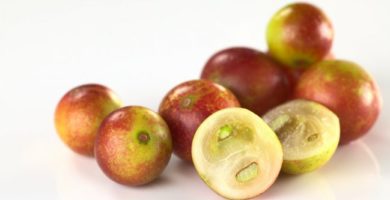
Camu-camu: benefits, Super-Vitamin C and where to buy
January 25, 2020
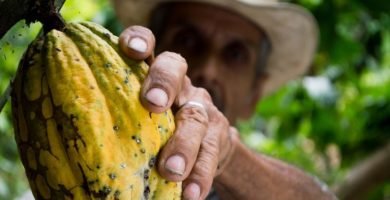
Cocoa (Theobroma cacao)
January 10, 2020
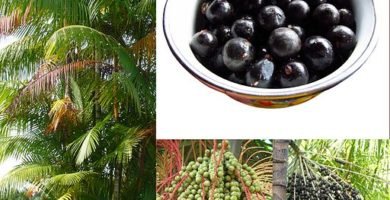
Acai, asai, asaí or açaí: a fruit that cures EVERYTHING!
December 9, 2019
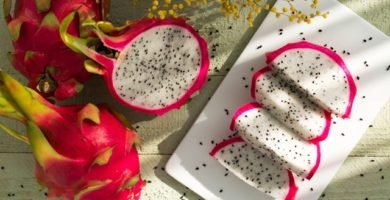
Dragon Fruit Benefits – The healthy power of Pitayas
October 28, 2019
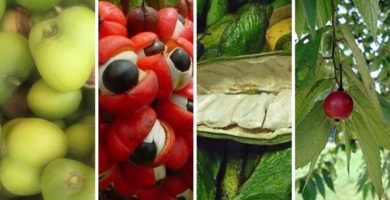
7 medicinal fruits of the Amazon Rainforest
October 20, 2019
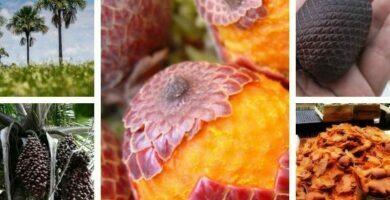
Mauritia Flexuosa: “The tree of life” (Buriti or Moriche palm)
October 5, 2019
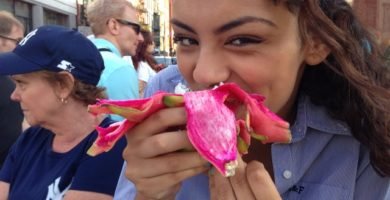
Amazonian fruits – Jungle Fruits and Super Food
October 5, 2019
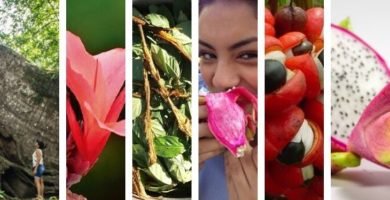
🥇 Amazon Rainforest Plants: 1001 species, names, photos and uses!
This post is also available in:
![]() Español (Spanish)
Español (Spanish)
